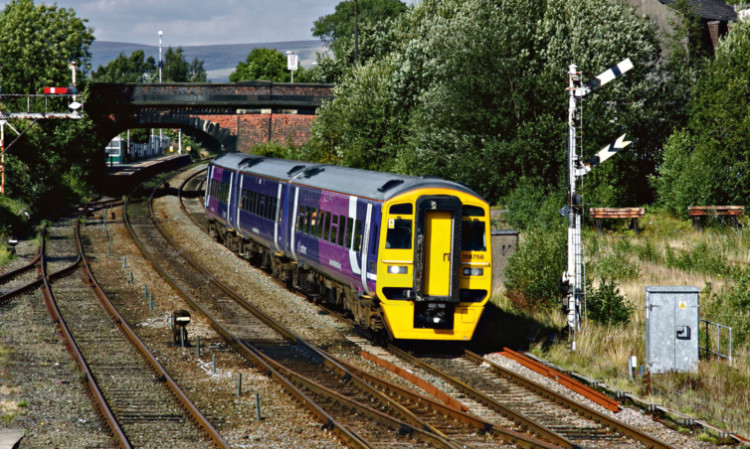
Rail bosses have been forced to withdraw ageing carriages because they stink of sewage.
Disgusted passengers using trains owned by Northern Rail handed a £632 million taxpayer-funded subsidy last month have had to put up with vile smells from train
toilets.
The unbearable stench has become so bad that Northern, the UK’s largest train operator, had to remove some of its carriages from service.
Northern said this had only happened in “extreme cases”.
But passenger watchdogs demanded the company take action to end the misery for tens of thousands of rail commuters across the north of England.
Last night, Linda McCord, of Passenger Focus, blasted: “It is essential that Northern gets a grip of the situation and sorts this problem out.
“Passengers have a right to travel without having to endure unpleasant toilet smells.”
A whistleblower revealed the problems in a report to rail industry safety watchdog CIRAS (Confidential Information Reporting and Analysis System).
Dirty septic tanks were not being cleaned, causing carriages to “smell of sewage”, according to the anonymous Northern Rail worker. Others have yet to be fitted with escape pipes to stop foul-smelling gas seeping from tanks up through toilet pans.
And the company’s creaking stock some of the oldest on Britain’s rail network has been blighted by even more problems. Leaky roofs allowed water to pour into cabs and carriages on some trains, and wheel flats are taking up to a month to repair. This means “uncomfortable” journeys for passengers, according to the report.
Older trains had worn brakes, which could affect emergency stopping distances, it was reported.
Northern said trains were removed from service immediately once it had received reports of worn brakes. A spokesman said they were “rigorously maintained, checked and audited” in line with industry standards and regulated by the Office of Rail Regulation.
However, Ms McCord said the latest Passenger Focus survey on the upkeep of trains had rated Northern as the second worst of all Britain’s train companies. Only 59% of passengers were satisfied with the operator.
The criticism comes after the Department for Transport (DfT) awarded Northern a 22-month extension to its current franchise.
The operator, which is part-owned by international services company Serco and Dutch partner Abellio, faces tough new targets on punctuality, reliability and passenger satisfaction. It hiked fares by 2.8% in January.
Labour MP Tom Blenkinsop described the Northern fleet as “completely unsuitable for a modern rail network”.
The Middlesbrough South and East Cleveland MP said: “A blas approach has been taken with the £632m franchise extension and it does not seem like a Government priority to make the necessary improvements.”
A spokesman for Northern Rail said the smell of sewage in carriage had affected its Class 158 trains, which run main routes across the Pennines from York to Blackpool.
Septic tanks had been fitted with vent pipes and new stainless steel pans have been put into toilets on some trains.
The spokesman said: “We have a safety certificate which embraces all operation and maintenance of our fleet of trains, and this is awarded by the safety regulator.”

Enjoy the convenience of having The Sunday Post delivered as a digital ePaper straight to your smartphone, tablet or computer.
Subscribe for only £5.49 a month and enjoy all the benefits of the printed paper as a digital replica.
Subscribe